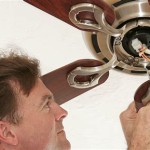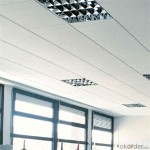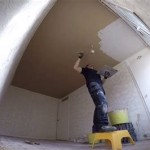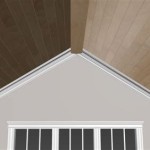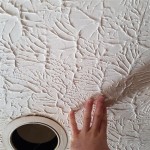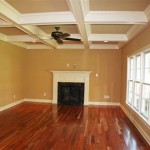Beautifying Your Home With Wood Beams Ceiling Designs
Wood beams in ceiling design represent a timeless architectural feature capable of injecting warmth, character, and a touch of rustic elegance into any living space. Beyond mere structural support, these beams have evolved into a design element, offering a versatile range of aesthetic possibilities. Whether aiming for a traditional farmhouse ambiance, a modern industrial feel, or a sophisticated contemporary look, incorporating wood beams can significantly enhance the overall appeal of a home.
The decision to integrate wood beams into a ceiling design is multifaceted, encompassing considerations such as the existing architectural style of the home, the desired aesthetic, and the functionality required. The selection of wood, the beam dimensions, the spacing between beams, and the finish applied all contribute to the final outcome. This article delves into the various aspects of beautifying a home with wood beam ceiling designs, exploring the different styles, materials, and installation considerations to help homeowners make informed decisions.
Understanding the Allure of Wood Beams
The enduring popularity of wood beams stems from their inherent ability to introduce visual interest and texture to a space. Unlike smooth, flat ceilings, wood beams create depth and dimension, drawing the eye upward and adding a focal point to the room. The natural grain patterns and variations in wood provide a sense of organic beauty that contrasts with the often sterile appearance of modern construction materials. This contrast can create a feeling of warmth and comfort, fostering a more inviting atmosphere.
Historically, wood beams were a necessity in construction, serving as structural supports for roofs and floors. While modern building techniques often render them structurally redundant, their aesthetic value has ensured their continued use. Today, decorative wood beams are commonly used to replicate the look and feel of traditional timber framing, bringing a sense of history and craftsmanship to contemporary homes. The perceived solidity and permanence of wood beams evoke a sense of security and stability, contributing to the overall feeling of well-being within a living space.
Furthermore, wood beams offer a canvas for personalization. They can be stained or painted to complement the existing color scheme of a room, or left in their natural state to showcase the beauty of the wood grain. Different wood species offer a range of colors and textures, allowing homeowners to select the material that best reflects their personal style. The possibilities for creative expression are virtually limitless, making wood beams a highly adaptable design element.
Exploring Different Styles and Designs
The versatility of wood beams is evident in the diverse range of styles and designs that can be achieved. From rustic to contemporary, there is a wood beam ceiling design to suit virtually any aesthetic preference. Understanding the characteristics of each style is crucial for creating a cohesive and harmonious look within the home.
A classic rustic style often incorporates heavy, rough-hewn beams with visible knots and imperfections. These beams are typically left unstained or treated with a dark stain to enhance their natural character. This style is well-suited for homes with a traditional farmhouse or country aesthetic, creating a sense of warmth and authenticity. The beams may be paired with other rustic elements, such as exposed brick, stone fireplaces, and natural wood flooring.
In contrast, a modern industrial style typically features clean, straight lines and a minimalist aesthetic. Wood beams used in this style are often lighter in color and have a smoother finish. They may be paired with exposed ductwork, concrete floors, and metal accents to create a raw, edgy look. The beams may be spaced farther apart than in a rustic design, emphasizing the openness and airiness of the space.
A contemporary design can incorporate wood beams in a more subtle and refined manner. Beams may be painted a light color, such as white or gray, to blend seamlessly with the ceiling. They can also be used sparingly, perhaps as a single accent beam running the length of the room. The goal is to add visual interest without overwhelming the space. This style is well-suited for homes with a minimalist or Scandinavian aesthetic. The wood offers a touch of natural warmth to the otherwise clean and spare interiors.
Another option is to use reclaimed wood beams. These beams, salvaged from old buildings and structures, offer a unique sense of history and character. They often have a weathered appearance and may exhibit signs of wear and tear, adding to their charm. Reclaimed wood beams are an environmentally friendly choice, as they repurpose existing materials and reduce the demand for new wood products. They can be incorporated into a variety of styles, from rustic to modern, adding a touch of authenticity and sustainability.
Material Selection and Installation Considerations
The choice of wood species is a critical factor in determining the appearance and performance of wood beams. Different wood species vary in color, grain pattern, density, and cost. Understanding the characteristics of each species is essential for selecting the right material for a specific project.
Douglas fir is a popular choice for wood beams due to its strength, availability, and relatively low cost. It has a reddish-brown color and a prominent grain pattern. Pine is another affordable option, but it is softer and less durable than Douglas fir. It has a yellowish-white color and a more subtle grain pattern. Oak is a hardwood known for its strength, durability, and beautiful grain pattern. It is more expensive than Douglas fir and pine, but it offers a more luxurious look and feel. Cedar is a naturally rot-resistant wood that is often used for exterior applications. It has a reddish-brown color and a distinctive aroma.
In addition to solid wood beams, faux wood beams are also available. These beams are typically made from lightweight materials such as polyurethane or foam. They offer a cost-effective alternative to solid wood and are easier to install. Faux wood beams can be manufactured to resemble a variety of wood species and can be stained or painted to match the existing decor. However, they lack the natural beauty and authenticity of solid wood.
Proper installation is crucial for ensuring the safety and longevity of wood beams. The installation process will vary depending on the type of beam, the ceiling structure, and the desired aesthetic. It is generally recommended to hire a qualified contractor to install wood beams, especially if structural modifications are required. A professional contractor will have the necessary expertise and equipment to ensure that the beams are properly supported and securely attached to the ceiling.
Before installation, it is important to carefully measure the ceiling and plan the beam layout. The spacing between beams will affect the overall appearance of the ceiling and should be considered in relation to the size and proportions of the room. The weight of the beams must also be taken into account, as the ceiling structure must be able to support the added load.
In many cases, it may be necessary to reinforce the ceiling joists to accommodate the weight of the wood beams. This may involve adding additional joists or sistering existing joists with new lumber. A structural engineer can assess the ceiling structure and provide recommendations for reinforcement. After the beams are installed, they can be finished with a stain, paint, or sealant to protect them from moisture and wear. The finish should be chosen to complement the existing decor and to enhance the natural beauty of the wood.
Lighting can also play a significant role in showcasing wood beam ceilings. Recessed lighting can be used to highlight the beams and create a warm, inviting atmosphere. Pendant lights can be suspended from the beams to provide task lighting or to add a decorative touch. The placement and style of the lighting should be carefully considered to complement the overall design of the space.
Integrating wood beam ceiling designs into a home can be a transformative process, adding character, warmth, and a touch of timeless elegance. By carefully considering the style, materials, and installation techniques, homeowners can create a truly unique and beautiful living space.
:max_bytes(150000):strip_icc()/JaD-zovY-c775f07b36254e12992979641589ae39.jpg?strip=all)
35 Decorative Ceiling Beam Ideas That Are Sure To Impress

Diy Wood Beams And Install With Shorter Ceilings Grace Oaks Designs

Wood Beam Ceiling Ideas With A Touch Of Rustic Charm Architectural Digest

Beamed Ceiling Ideas 11 Designs That Celebrate Beautiful Beams

32 Wonderful Ideas To Design Your Space With Exposed Wooden Beams Living Room House Interior Wood Beam Ceiling

Wood Beams In Greatroom At Modern Farmhouse Glam
:strip_icc()/large-open-great-room-brick-fireplace-0a0fe8e2-13ad671640b34a81a30b8d01b8c42355.jpg?strip=all)
How To Make Diy Wood Beams Add Farmhouse Style A Basic Ceiling
:strip_icc()/BlueCopperDesign-Home-yProject-LifeCreatedPhotography61-c94c6ce96949416d935f749b47f4c9a8.jpg?strip=all)
20 Interiors Rocking Stunning Ceiling Beams
:max_bytes(150000):strip_icc()/unnamed-b7a2403fc2ee4a7aae8d42ed29a09016.png?strip=all)
35 Decorative Ceiling Beam Ideas That Are Sure To Impress

Vaulted Ceilings Ideas That Take Rooms To New Heights Architectural Digest
Related Posts

